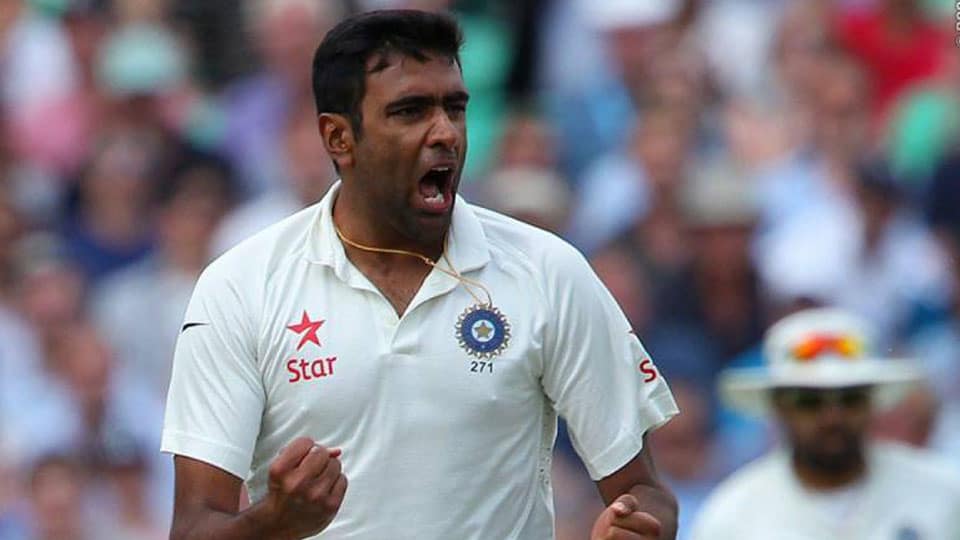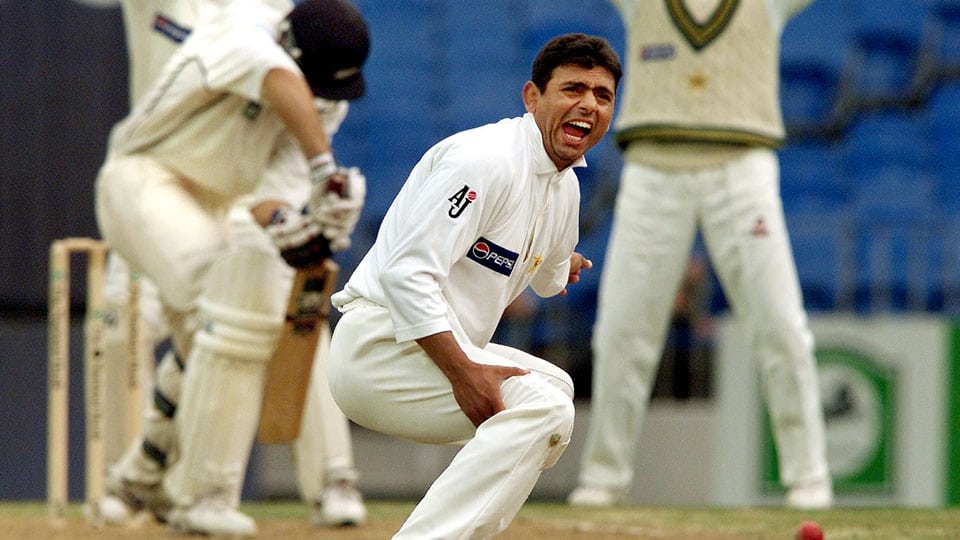We were playing for the University Grants Commission, there was a thin lean clean shaved spinner, his reputation was burgeoning each day. I had heard a bit about him, nonetheless I hadn’t played against him.
Obviously my cricket talent was as much as Jerry Lewis had in him the penchant for serious roles. Below par, an over enthusiastic batsman, right-handed and a strokeless wonder, I strolled out in the ground.
This boy was curling his fingers and getting ready to bowl. Tentative and equally ambiguous about the pitch, the ball had started to turn. I didn’t know there was a difference between ‘turn’ and ‘spin’. However, embattled I tried to recover, a short-leg, a leg-slip, silly mid-off, short cover, mid and mid-off up, a slip and the wicket-keeper; all of them, it seemed were mocking at me.
I prodded forward, an off spin kicked and hit me on my chest. The next one I tried coming slightly behind and in line spun viciously, not the usual off-spin, it whipped past my bat like a leg break. My torment was soon over, Nadeem Afzal bowled me middle stump from the other end.
Pakistan’s first off spinner was Zulfiqar Ahmad followed by Saeed Ahmad, sporadically played Haseeb Ashan and Afaq Hussein, Majid Khan turned to spin after being alleged for throwing, Masood Ul Hassan, Mohammad Nazir one of the better bowlers of his type in the world, until Tauseef Ahmad debuted in 1979-80
I didn’t play that wily off spinner again. As I graduated into a role of a writer for The News International I rediscovered him. Rizwan Eshan Ali alias ‘Joji’ reporter with an extremely keen eye brought a photograph, the same off spinner who had routed me couple of years back. He had been picked to play for Pakistan against Sri Lanka. He had earlier been on Pakistan U-19s tour to New Zealand.
I believe, there are many types of an off spinner- that’s common, there are different mindsets, it’s relatively scarce. All depend on the run up, loading, the non bowling arm, position of the bowling arm without it being straightened, the up and over, revolutions, shape of the ball, release without it being scrambled, drift and dip. Line, length and deception in the air make them intimidating.
Then there could be technical factors which I learnt at the University of Western Australia, these normally impact the rate at which the ball spins.
I realized quite late into my dissertation that pelvic movements were directly related to the amount of spin before pitching on the turf. The rotation of the pelvis and planting of the front foot, the last contact and release added value to an off-spinner.
Interestingly, there has been a misconception about the spinners depending upon their arms, relatively the upper body is a mobile component the more prominent parts are the pelvis, hips and legs. You don’t spin with the fingers, you do it with a momentum, the pivot and front foot landing.
Why the balk moves or wavers in the air is predominantly due to ‘lift’ on the side which is advancing due to the spin motion the air flow is reduced there is a high-pressure space.
Bowling his ‘doosra’ Saqlain had less rotations of the pelvis, the revolutions were lesser, the release was more frontal, deceiving batsmen not in the air but after pitching, the zip and nip were potent
On the other, dependent side, it creates a low-pressure area. The difference in pressure causes a ‘Lateral Force’ perpendicular to the ground and a lateral movement of the ball during flight labelled as drift.
Lift becomes important, it’s force varies in direction even in the magnitude, it is dependent on the quantum of spin, the axis and the plane on which it is spinning.
Spinners unlike the fast bowlers have more contact with the ball, palm impact in the horizontal plane and fingers in contact perpendicularly. They employ grip in the line of the ‘seam’ on the ball. This predisposes to an axis perpendicular to the direction of the spin. It stabilizes the seam position and there is propensity towards drifting the first impact on the turf.
In conditions such as Asia, the pitches are drier or crumbling inducing friction between the turf and the ball, therefore more lateral deviation.

Saqlain Mushtaq, our ‘Saqi’ was probably the purest off-spinner more versatile than Ian Johnson, Jim Laker, Fred Tirmus, Lance Gibbs, or an Ashley Mallett. There were quite a few others Mohammad Nazir Jr., Erapali Prasana, Raymond Illingworth, Bruce Yardley, Srinavas Venkataraghavan, or Shivlal Yadav, Vic Marks, Eddie Hemmings, John Emburey and then the world changes we get into the masterly craftsmen Muttiah Muralitharan and Saqlain Mushtaq,
Followed by less versatile Graeme Swann, Saeed Ajmal and Nathan Lyon. Ravichandran Ashwin is again extraordinary.
Pakistan’s first off spinner was Zulfiqar Ahmad followed by Saeed Ahmad, sporadically played Haseeb Ashan and Afaq Hussein, Majid Khan turned to spin after being alleged for throwing, Masood Ul Hassan, Mohammad Nazir one of the better bowlers of his type in the world, until Tauseef Ahmad debuted in 1979-80. There were quite a few top quality bowlers Sajjad Akbar, Murtaza Hussein and Arshad Khan, their careers were limited due to Saqlain’s arrival.
From how he started, Saqlain improved progressively noticeably making changes to have better alignment. His shift, transfer of force, pivot and the momentum were just brilliant.
More side on as he started to have unsupportive knees, the meniscus and cruciate tears, the dislocated patella and the tibial notching compelled him to turn to slightly a frontal action. He had an open pelvic positioning as his left or the front foot impacted the ground. His pelvic rotation were both impactful and efficient. The kinetic energy transfer from the gluteii to the groin and the arms during release induced more spin and just by changing the axis of the seam and the final tweak he could do it viciously, his off spin suffered largely due to weakening knees still his ‘doosra’ was unplayable. Why didn’t he have a kink in his bowling arm was because of the release speed, he bowled slower in the air. Arshad Khan was different, Saqlain more diversified. Arshad had more nip was relatively taller and banged the ball more forcefully than Saqlain.
The speed at which Saqlain released the ball was also instrumental in his success. I saw Marvan Atapattu batting diligently against him, the axis of his bat, the swing and impact he could bring into his batting the idiosyncratic evidences provided by Saqlain at Kennedy in 2000, Marvan read him well. The release velocity, height, above the eyes or adjacent to them, the angle he interpreted and turned into dexterity. He was an able batsman. His precision around him evolved a psychological template and it made it easy for him to contemplate and assess the trajectory. Despite Saqlain’s versatility and prompt variation in speed he could align himself better.
Saqlain tested him varying his release speed ranging between 55 mph to 65mph, which prompted him to miss the trajectory in the blind spot.
Saqlain probably was the greatest off spinner even better than Muttiah Muralitharan not in terms of the numbers but qualitatively, the greatest innovator he not only mobilized his wrist but locked it late and the snapping was just incredible.
Bowling his ‘doosra’ Saqlain had less rotations of the pelvis, the revolutions were lesser, the release was more frontal, deceiving batsmen not in the air but after pitching, the zip and nip were potent.
I believe, Ravichandran Ashwin with his ‘carom’ ball may well be most effective, Muralitharan could bowl both, off spin and doosra, he was more consistent fitter and dynamic, the greatest off-spinner in terms of kinetics and balance were John Emburey and Saqlain Mushtaq. Emburey was all about alignment and simplicity, whilst Saqlain was complete, proactive and an artist.
